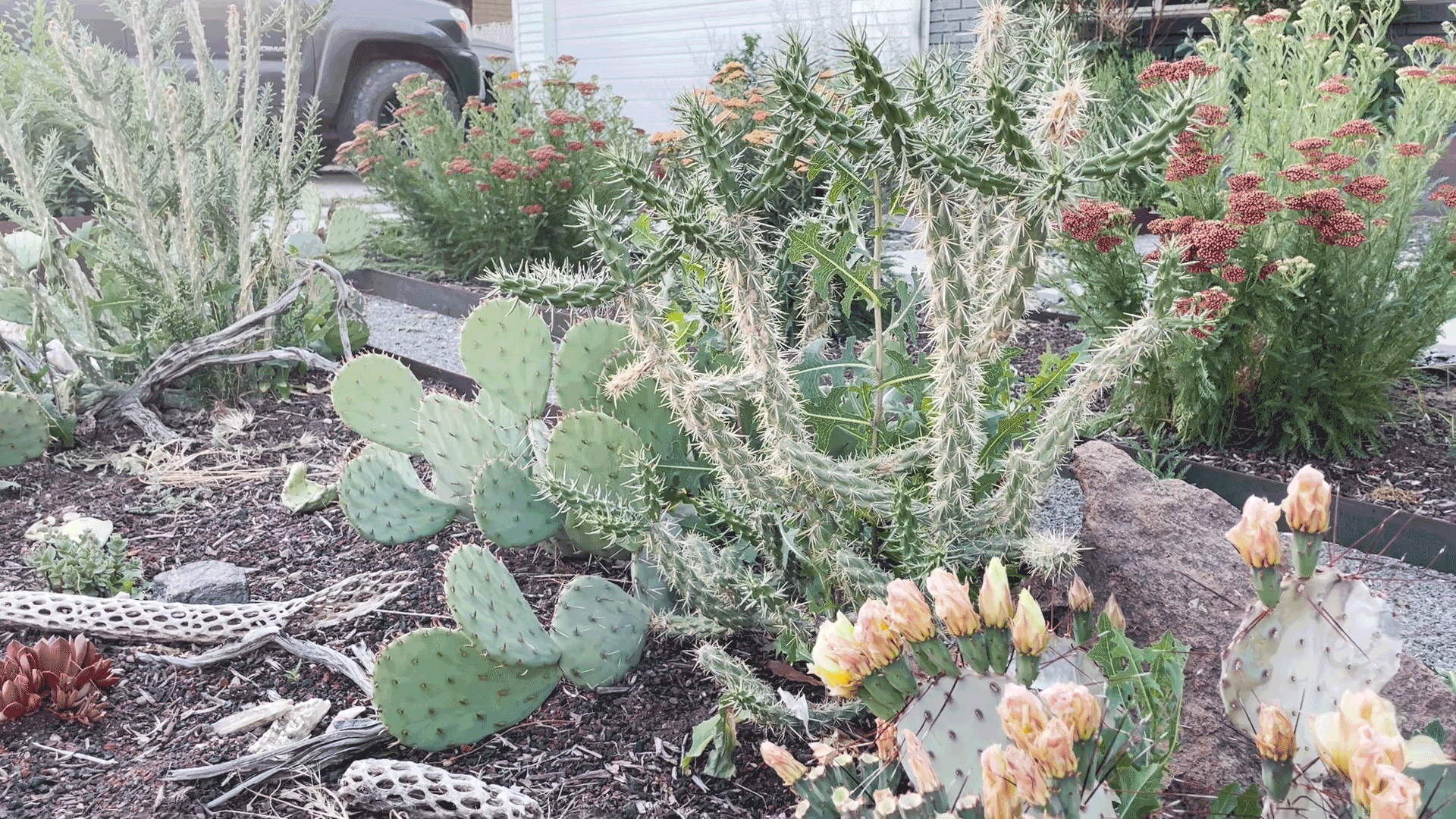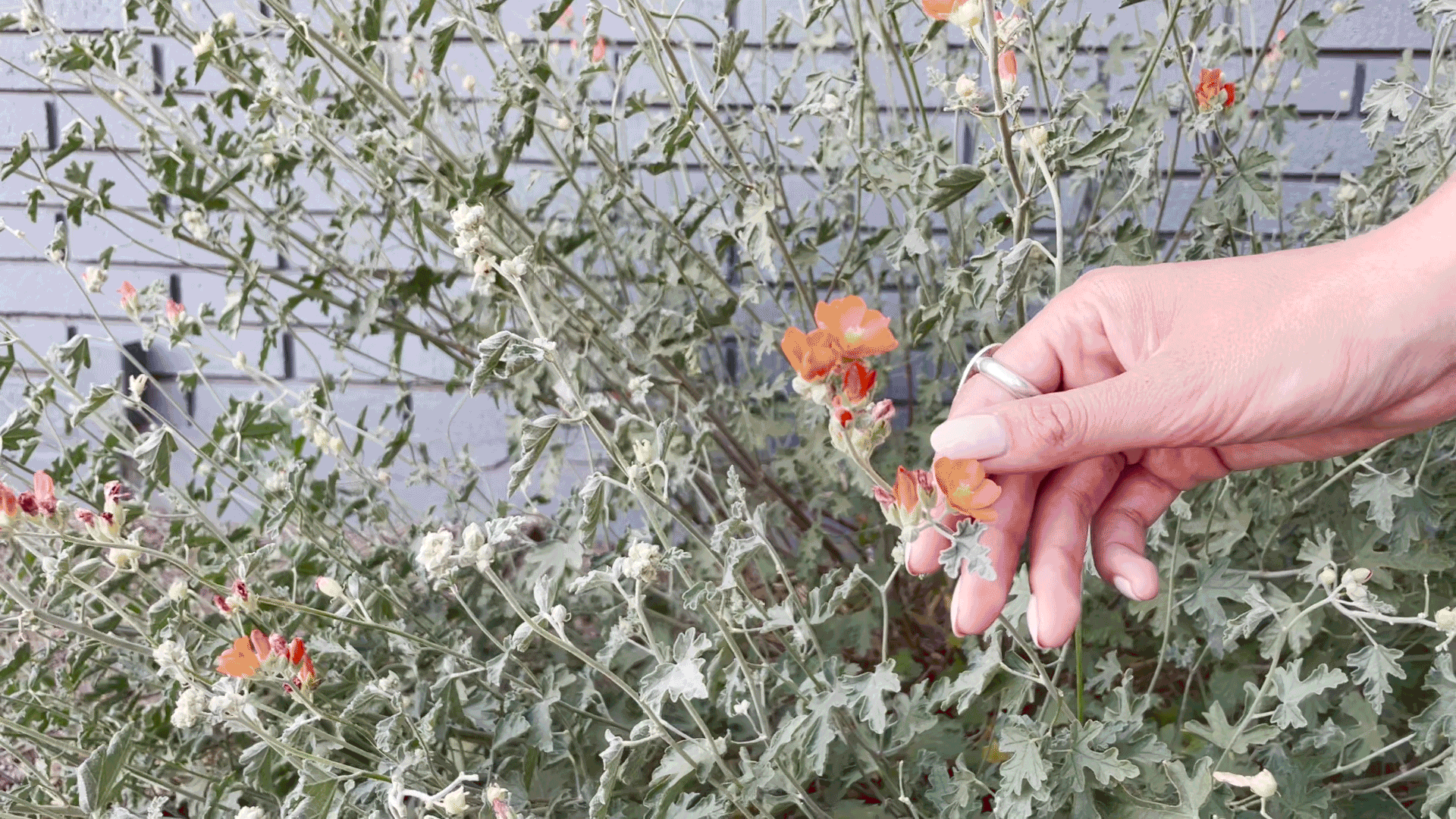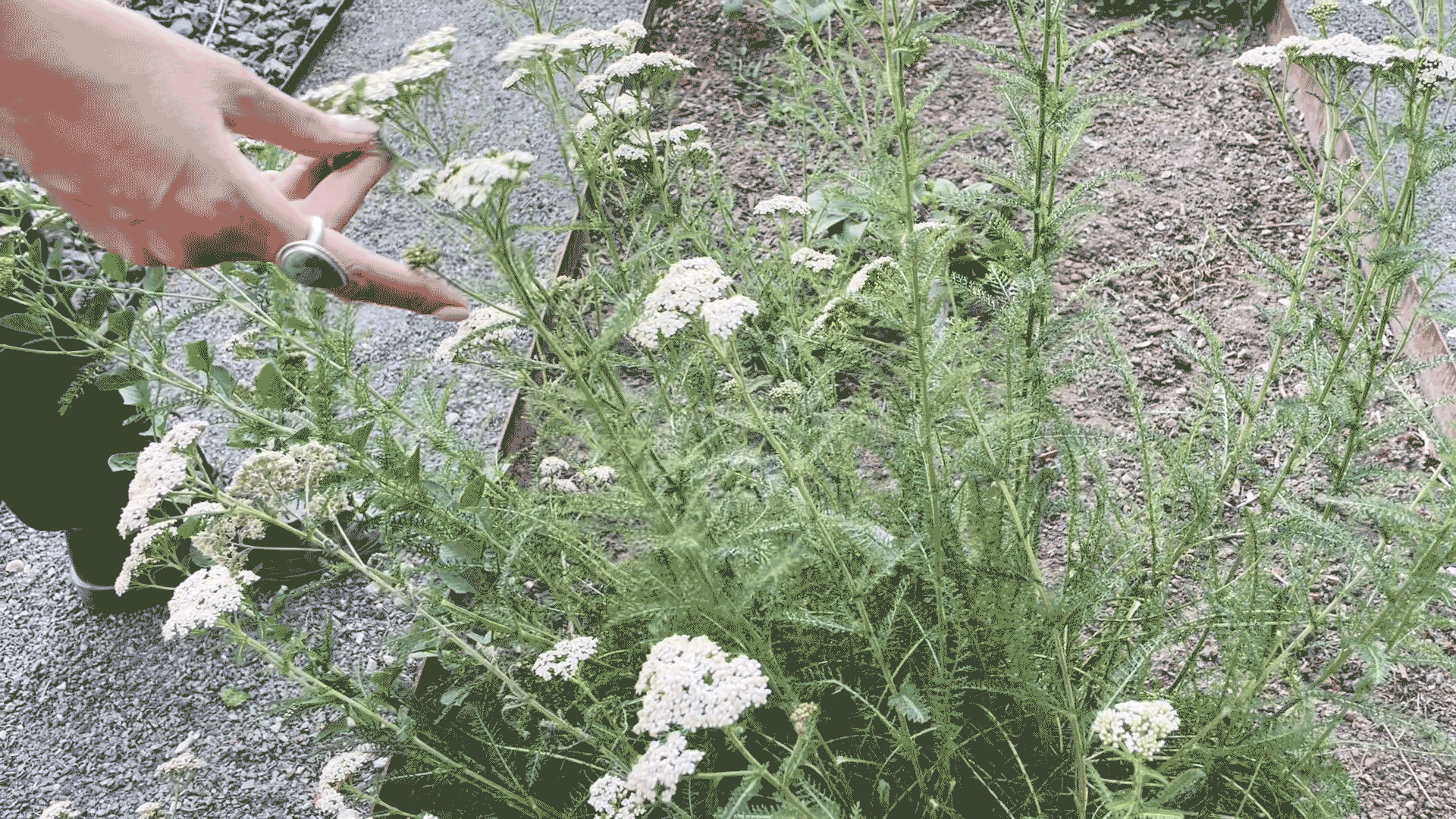Haley Nord, a brilliant local photographer, loves her home. She is especially passionate about her garden. Where there was once lawn, there is now a lovingly designed network of steel beds and local rock holding thoughtfully selected desert native plants and a burgeoning ecosystem of local wildlife.
When Haley and her husband, Truck, purchased their ranch-style home in West Valley City, it came complete with a lush green lawn, like all the other neighbors. What they didn't realize, however, is that the renovators who sold them the home had added sod and soil over the existing sprinklers.
"We sort of stumbled into getting rid of our lawn, to be honest." says Haley, "When we realized the sprinkler system had sod over it, we tried to figure out how to salvage the lawn. Then we realized they had also bricked over the sprinkler box." (Haley laughs.) "So in the process of trying to figure out what to do, and as a result of a super hot and dry summer, our grass died."
Rather than replace the sod, they decided to let it die the natural way and opted for a water-wise garden. The following year, they enlisted the help of local landscaping company, Modern Metals.
They began the project by removing the dead sod. Then excavated and flattened the area. They proceeded to add a beautiful layout of gravel and cement paths with strategically placed hand-crafted metal boxes.

"It was important to me to choose a landscaping team who understood my vision. Modern Metals is led by a team of artists. They could see my vision and run with it. They were also open to the idea of just laying down the beds and letting me add plants later. I wanted to experience selecting and planting my garden."
"Over the next few years, I began collecting plants," says Haley. "I would visit Deseret Perennial Farm every month during the growing season to see what was blooming. This helped me choose things that would bloom in succession so I had something blooming every month. They grow all of the plants from seed in Salt Lake City so every plant is acclimated to our area."
Foraging was an important aspect of Haley's garden design. She collected bits of wood and rock from areas of the desert that were meaningful to her, always careful to be sure it was collected from private land where she had permission. She also collected and transplanted local Sagebrush and Rabbitbrush from her grandparents' land in the west desert.
A few of Haley's favorite plants are her Sagebrush and her Globemallow.
"The Sagebrush is representative to me of what this valley probably looked like originally. And the Globemallow attracts all kinds of wildlife including bees, butterflies, and hummingbirds."

"Having the opportunity to sit in my garden and observe all the wildlife that comes to visit is the most rewarding aspect of my native garden," says Haley. "The main things we see are mason bees, bumblebees, hummingbirds, and butterflies."
As to what Haley might do differently in the next native garden, she says, "If I had to go back, I would have just done more research or hired someone who was an expert in these kinds of plants to help me make my selections. I lost a lot of plants the first year because I didn't understand the watering needs when I first planted. Even though they are low-water plants, they require a lot of water in the first year to get their roots established. They do best if you plant them in the spring or the fall and not the hot summer months."
If you are thinking about xeriscaping your lawn, here are a few key things to keep in mind:
- Sod is the easiest to remove once it is dead. Consider giving your lawn a growing season without water, then rent a sod remover at the end of the season to remove both the grass and any existing weeds. Try to avoid spraying your lawn with poison or covering it with plastic as both practices can cause damage to the nutrients and diverse biome in your soils that will support the growth of native plants.
- Many native plants still require some water, especially in the dryer months. Consult your landscaping company about installing a low-water drip irrigation system that can be set on a timer. This will be especially helpful for new plantings which require plenty of extra water the first year to become established. Once established, most native plants will only need occasional watering during extended periods of drought.
- Native plants thrive if they are planted in the proper zone. Consult the Farmer's Almanac for an understanding of what zone you are in and choose plants that will thrive in your area. Some perennials may only last for a season if planted in a zone that is too cool or too warm.
- Weeding is a natural part of gardening. In my experience, it takes less time to weed an established garden than to mow a lawn. It's helpful to weed early in the spring and later in the fall when cooler temperatures bring on more plentiful weeds. They will also be more delicate and easier to remove during these times. Natural mulches like bark and gravel will create a barrier to keep the weeds to a minimum. They will also help keep the soil moist for longer by preventing evaporation.
- Many native plants are perennials, meaning they come back year after year. This is easier on the budget and also easier on the water usage, as well-established plants have larger networks of roots that tend to need less water. Most perennials have blooming seasons, which means certain plants bloom during certain months. Consult your native plant nursery for ideas of plants that will make good companions to other plants because they are blooming while the other is resting.
- Consider the winter interest of your garden. It's not necessary to cut back grasses or remove seed heads from your yarrow. Leaving these things in place provides a lovely texture for sunny winter days and brings food to beneficial birds and insects in the garden. While you're at it, consider moving fallen leaves into your garden beds for some winter cover, rather than bagging them up and throwing them away.
Cultivating a garden takes time and patience. Consult local experts, and do your research before you invest in a water-wise landscape. And, most of all, remember to create a space to sit back and enjoy it.
You can see the full tour of Haley's garden on our reels.





